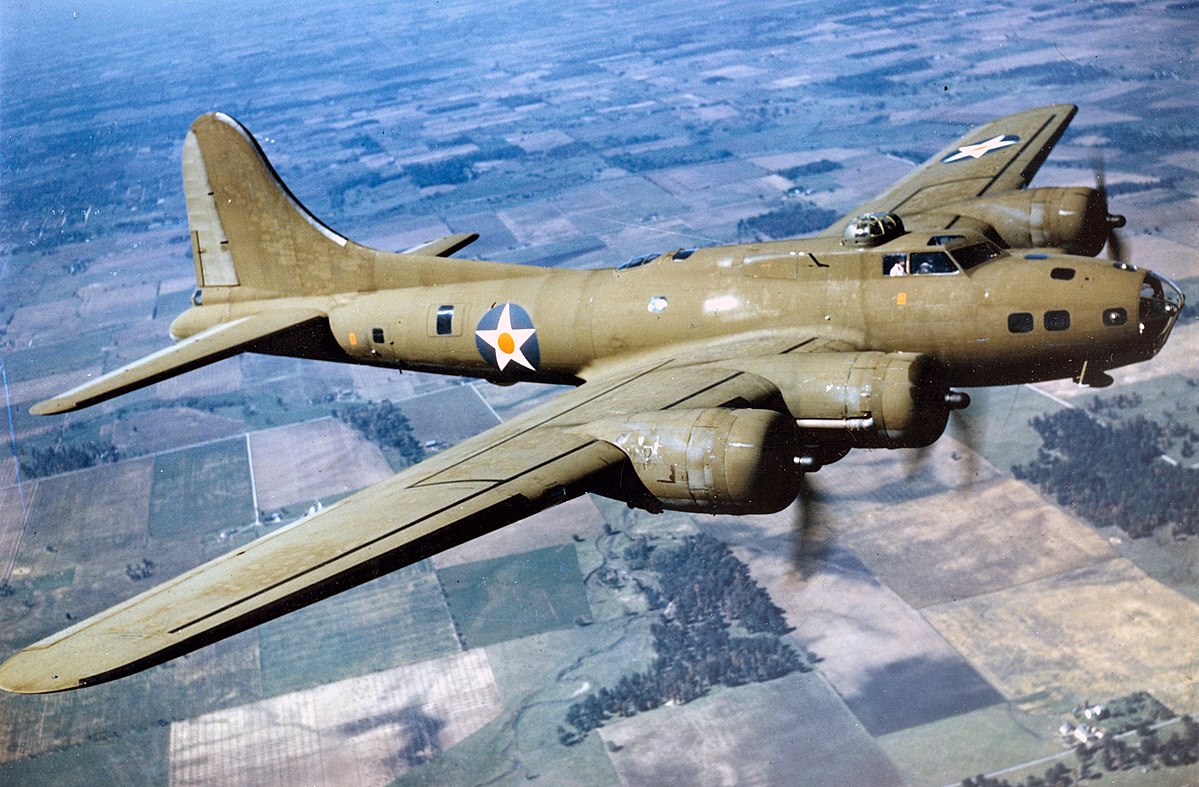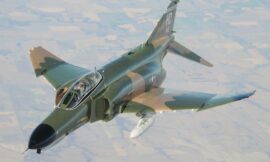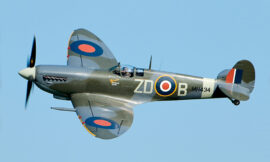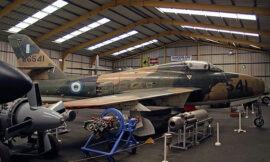The Boeing B-17 Flying Fortress, an iconic symbol of American air power during World War II, holds a revered place in aviation history for its ruggedness, firepower, and resilience. Developed in the 1930s in response to a U.S. Army Air Corps requirement for a long-range bomber capable of high-altitude operations, the B-17 quickly became one of the most recognizable and formidable aircraft of the war.
Designed by a team led by Boeing engineer Robert Serling, the B-17 was characterized by its distinctive appearance, featuring a large fuselage, four engines, and a clustered array of defensive machine guns bristling from various positions. The aircraft’s nickname, “Flying Fortress,” aptly captured its reputation for being heavily armed and well-defended, with a crew of ten or more personnel manning its defensive positions.
The B-17’s combat debut came in the European theater, where it served as the backbone of the U.S. Eighth Air Force’s strategic bombing campaign against Nazi Germany. Flying long-range missions deep into enemy territory, B-17 crews faced formidable challenges from German fighter planes and anti-aircraft defenses but displayed remarkable courage and determination in the face of adversity.
One of the B-17’s most notable attributes was its ability to absorb punishment and keep flying. The aircraft’s robust construction, featuring a strong airframe and redundant systems, allowed it to withstand significant battle damage and return safely to base even after sustaining severe hits from enemy fire. This durability earned the B-17 a reputation for being able to “bring the crew back” despite the odds.
The B-17’s offensive capabilities were equally impressive. Carrying a payload of up to 8,000 pounds of bombs, the Flying Fortress could deliver a devastating blow to enemy targets, including industrial complexes, military installations, and transportation networks. Its ability to conduct precision bombing raids helped to cripple the German war machine and pave the way for Allied victory in Europe.
Despite its formidable reputation, the B-17 faced significant challenges and losses during the war. Enemy fighters and anti-aircraft fire took a heavy toll on B-17 crews, with many aircraft shot down or severely damaged during combat missions. The human cost of flying the B-17 was steep, with thousands of brave airmen making the ultimate sacrifice in defense of freedom and democracy.
Nevertheless, the B-17’s contribution to the Allied war effort was immense. Its role in the strategic bombing campaign helped to weaken enemy morale, disrupt German industry, and pave the way for the eventual defeat of Nazi Germany. After the war, the B-17 continued to serve in various roles, including reconnaissance, transport, and air-sea rescue, before eventually being retired from military service.
Today, the B-17 Flying Fortress remains a beloved and iconic symbol of American aviation history. Preserved in museums and air shows around the world, these legendary aircraft serve as a tangible reminder of the courage, sacrifice, and ingenuity of the men and women who flew them during one of the most challenging periods in human history.



